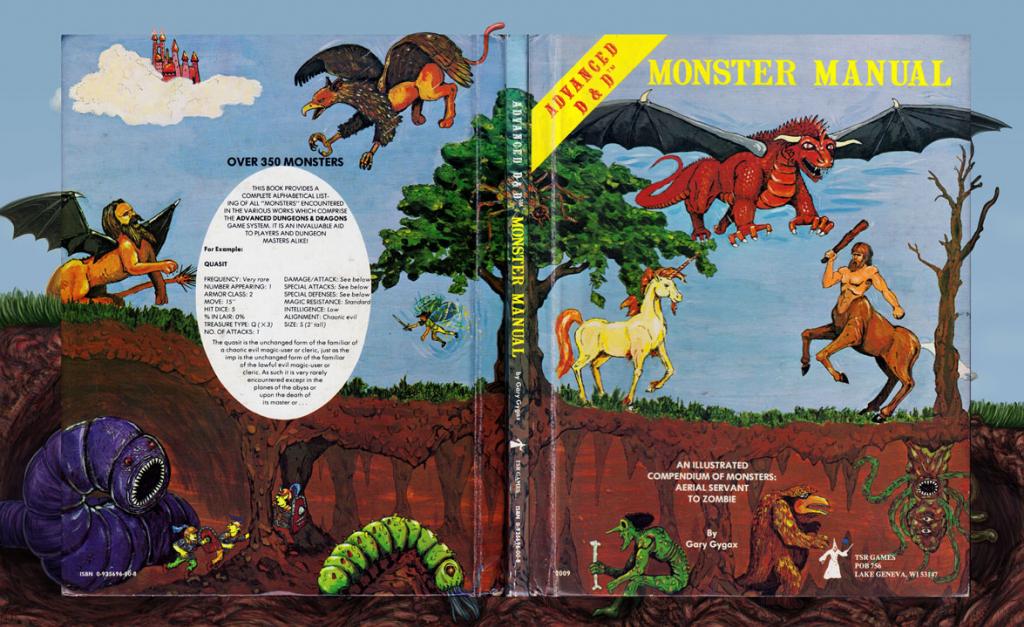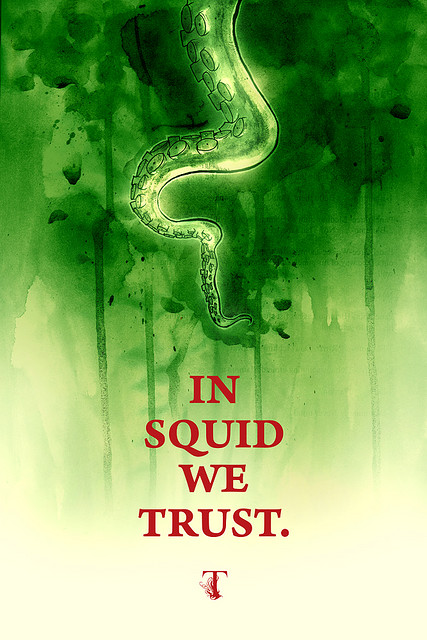If you’re looking for the AD&D podcast, subscribe here! For the history of this project (Chasing the Dragon), start here.
The 1e AD&D Players Handbook is the best RPG rulebook that I’ve ever read. I say that without any qualification whatsoever. Here are my reasons why:
- This picture on the title page. It sums up the very essence of the book and the game.
 Gygax is seeking to harness the Tolkienesque ambiance of the Lord of the Rings with the help of a die. I actually didn’t even notice the die in the picture until my third or fourth time looking at it. And really, the game should function the same way. The fantasy is primary–the dice, secondary. Whether or not that is how it turns out still waits to be shown (to me).
Gygax is seeking to harness the Tolkienesque ambiance of the Lord of the Rings with the help of a die. I actually didn’t even notice the die in the picture until my third or fourth time looking at it. And really, the game should function the same way. The fantasy is primary–the dice, secondary. Whether or not that is how it turns out still waits to be shown (to me). - I actually read the whole thing in one sitting. And I enjoyed every second of it. Now granted, it’s only 126 pages and I may have skimmed a bit here and there, but it was an absolute blast to read. It’s just plain fun.
- The organization is pretty remarkable. I commented previously on the shoddy organization of the Dungeon Masters Guide…not the case with the PHB. Basically, the book takes the player step-by-step through character creation, reserving some of the more space-intensive matters (spells) for later.Additionally, the way that Gygax references items that would come later or had come before really showed that he had a command of this book’s organization. It is well thought-out, easy to process, and if something is going to be left unexplained for a time, he tells you.
- How blatantly Gygax is ripping off Tolkien. On the ranger table (pg. 25), a level three Ranger is called “Strider” and levels 10-12 are called “Ranger Lord.” This theme continues in the Dungeon Masters Guide.
- This explanation of hit points, which makes more sense than any other RPG (whether print, or video):It is ridiculous to assume that even a fantastic fighter can take [85 hit points, the equivalent of four huge warhorses]. … Thus, the majority of hit points are symbolic of combat skill, luck (bestowed by supernatural powers), and magical forces.So every hit point is not actually physical damage, but rather it represents the gradual wearing down of the character, as it battles and expends its energy and skills to survive.
- Hirelings and henchmen. Players are straight-up encouraged to get NPCs to help them. I could see this getting old as a DM, but as a player it sounds like a hoot.
- There are 60 pages of spells. Saves you from buying a second book and I appreciate this.
- The optional appendices: as much as I want to play rules-as-written, psionics seems a bit complex to add to a first-time campaign. I’m glad to feel like it’s an optional bit.
The things you might not like
Just because it’s the best RPG rulebook I’ve read doesn’t mean that it’s flawless. I’m trying my best to reserve criticism or negative judgments until I’ve played. And I do plan to play (at first) rules as written. But here are a few things I can tell might be less-than-preferable:
- Determining characteristic scores randomly, but then limiting the races, classes, and even genders on those randomly chosen numbers. Seems like it could be cumbersome for the player who came to the table with a clear character concept beforehand.
- It does seem pretty apparent that a lot of classes are squishy, especially the Magic-User (which has only 1d4 Hit dice, meaning a possibility of 1-4 hp at Level 1). Heaven help you if you start with 1 hp. With this game, it seems apparent that you really do need to start with at least 4-5 characters created, because characters will die.
All in all, this book may have absolutely sold me on the system. I got into a conversation with some guys the other night who were lauding 5th Edition. My only response was, “I don’t know, 1st Edition AD&D seems to have captured by curiosity. It could even be the best…”
What do you think? Am I crazy? Have you read it? What would you add? Sound off in the comments below!



